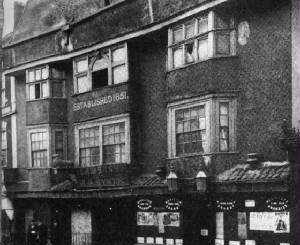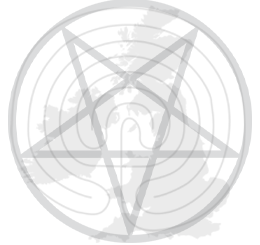Ursula Kemp and the St Osyth’s Witches
In Chelmsford, 1582, fourteen women from St Osyth were put on trial. The charge was witchcraft. Ten of those women faced charges of ‘bewitching to death’. Seperate skeletons found in St Osyth during 1921 were thought to belong to two of these women, executed as witches.In Chelmsford, 1582, fourteen women from St Osyth were put on trial. The charge was witchcraft. Ten of those women faced charges of ‘bewitching to death’. Seperate skeletons found in St Osyth during 1921 were thought to belong to two of these women, executed as witches.
According to the ‘Suffolk Free Press Newspaper Archive’ for 25 May 1921 ‘On digging sand at St Osyth workmen hitting something hard came upon a complete human skeleton, the skeleton was lying about 6 ft below the surface, the skeleton was not coffined, investigations suggest it is a woman who was fixed with an iron bar, it is thought the woman may have been a witch as in 1645 it is believed there was a rounding up of witches in this country.’
 A skeleton was found in the back garden of Mr Charles Brooker, Mill Street, St Osyth which was said to be that of Ursula (or Ursuley) Kemp (or Kempe) (born 1525 – died 1582), probably the best known of the witches and Mr Brooker made it into a tourist attraction, charging admission to see it and selling postcards.
A skeleton was found in the back garden of Mr Charles Brooker, Mill Street, St Osyth which was said to be that of Ursula (or Ursuley) Kemp (or Kempe) (born 1525 – died 1582), probably the best known of the witches and Mr Brooker made it into a tourist attraction, charging admission to see it and selling postcards.
Ursula Kemp
Kemp was known in St Osyth as a midwife and someone who would heal the sick, but unfortunately she became involved in a feud with a local family and following some unfortunate deaths she was accused of witchcraft. The trial in February 1582 was overseen by Justice Brian Darcy and one of her key accusers was Grace Thurlow (or Thurlowe), a neighbour from St Osyth.
Grace approached Kemp when her son Davy Thurlow fell ill and Ursula helped the child (supposedly with incantations) and he apparently recovered. An argument erupted between Ursula and Grace when Thulow refused to let Kemp be the nursemaid for her infant daughter Joan. The young child at some point then fell from its crib and broke its neck. This probably spread to rumors about Ursula spreading. Grace again approached Ursula for healing when she became lame possibly with arthritis. Kemp assisted and the pain eased, however, another argument ensued when Grace refused to pay claiming she could not afford the requested fee. When the lameness returned, Grace blamed Ursula for her ailment, her sons sickness and the death of Joan, so she filed a complaint with the authorities.
She was also accused of the death of Elizabeth Letherdale, the daughter of Alice Letherdale. Alice had refused to lend Ursula some cleaning materials and when Elizabeth became ill and died some time after Kemp was seen muttering or murmering in her direction, it was clearly a case of causing death by bewitchment.
During the trial Darcy persuaded Ursula’s illegitmate eight year old son Thomas Rabbet to testify that his mother used witchcraft and managed to get a confession from Kemp in private, prossibly after promising leniency.
Through the testimony of Thomas and Ursula it became apparent that Kemp had four familiars, Tyttey (a male white lamb), Jacke (a male black cat), Pygine (a female black toad) and Tyffin (female gray cat) to which she fed cake and beer and her own blood. The trial confirmed that Tyttey (the lamb) had been sent to kill Joan Thurlow and Jacke (the cat) to kill her sister in law. The other two familiars were used to make people ill.
Obviously confessions such as these did nothing to dissipate the fear and hysteria associated with the witch hunts.
Ursula Kemp also named other witches from St Osyth who in turn confessed and named more. The other accused women who stood trial were Alice Hunt, Alice Newman, Elizabeth Bennet, Margery Sammon, Joan Pechey, Agnes Glascock, Cicely Celles, Joan Turner, Elizabeth Ewstace, Anis Herd, Alice Manfield, Margaret Grevell and Anne Swallow.
Ursula Kemp and Elizabeth Bennet were found guilty and hanged. The others received a mixture of aquittals, discharges and reprieves.
But did one of the skeletons discovered in 1921 belong to Ursula Kemp? In 2007 Dr Alison Rowlands a leading historian and an authority on witchcraft pointed out that ten women from St Osyth have been executed for witchcraft and therefore if the suspected skeleton of Ursula was that of a witch, it only has a one in ten chance of actually being Kemp.
According to a story in the Daily Gazette entitled ‘St Osyth: Which witch is which?’ (dated 9th May 2007); ‘Dr Rowlands’ research, part of the university’s annual Essex Local History Day, claims the skeleton found in a garden in Mill Street in 1921 may not have been that of Kemp, who was hanged after a trial in Chelmsford in 1582. She claims the skeleton was quickly labelled as Kemp after rival reports in the Clacton Graphic and the Essex County Standard, but no scientific testing of the skeleton was ever conducted. The skeleton, and another unearthed later that year, were believed to be Ursula Kemp and Elizabeth Bennett, both hanged as a witches, because they were bound by iron rivets driven into their knees and elbows. She said: “In fact, it could have been one of ten women. “Two skeletons were found and there are at least ten possibilities – five who died at Chelmsford before witchcraft trails, as well as three women who were tried as witches in 1645……Dr Rowlands added that usually villagers would not have wanted to return the witches, who were executed in Chelmsford, to their village. If it was the family who rescued the body, she said the question must be asked why they would bind the woman’s hands in such a fashion. She added that the skeleton required testing and proper dating before it could be named as either of the women hanged in 1582.’
Whether the skeleton was that of Ursula Kemp or not, I believe it eventually found its way to the Museum of Witchcraft in Boscastle, Cornwall, then sold to the artist Robert Oscar Lenkiewicz (born 31 December 1941 – died August 5, 2002) in the late 1990’s. A Plymouth Evening Herald article quoting Dr Philip Stokes stated “The skeleton was lying inside the coffin, which was lined with blue material. The skeleton was laid out in the coffin with nails laid beside it at the appropriate points. It was at the far end of the library on the first floor, where the indexer would work. There was nothing special about it, it was just dried out old bones. I was not surprised it was there because Robert has had major projects on death and he was an authority on witches. His library of witchcraft materials was unique. He got a number of skulls from various sources over the years.”
Lenkiewicz had an extensive library including possibly best private collection of books on witchcraft and magic which were sold at Sotherby’s in 2003 following Robert’s death.




Re: Ursula Kemp and the St Osyth’s Witches
The following excellent article is worth reading if your interested in Ursula Kemp:
http://uk.prweb.com/releases/2011/11/prweb8974277.htm